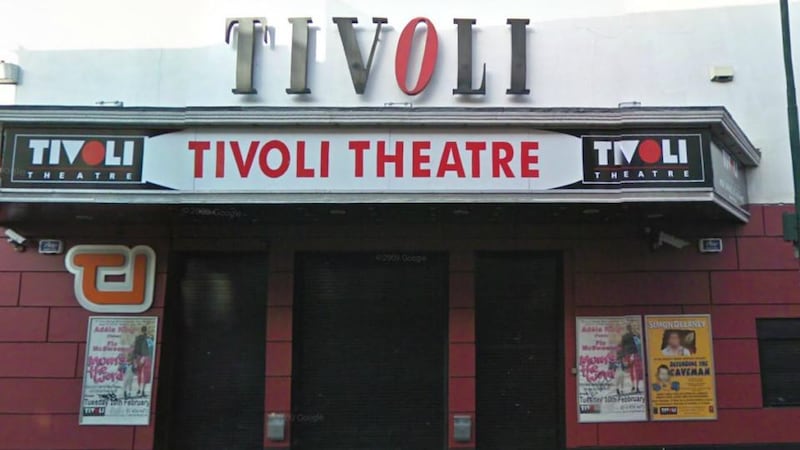Of all of the closures and demolitions that typify Dublin’s gentrification right now, the Tivoli Theatre on Francis Street, also known as the club District 8, is one that really stings. Knocking down cultural spaces for aparthotels is where we are at as a city.
There is a difference between other recent club closures, such as Lillie’s Bordello and the Wright Venue, and the closure of the Tivoli. While the latter two may have been much loved by their customers, there is a difference when a venue’s programming and community holds a space in creative culture. While most club closures are the result of economic forces that make it difficult to run clubs, especially given the temptations that are there to turn a massive profit by knocking venues and turning them into hotels, the Tivoli was more than just a place to go drinking.
A glance at recent listings alone shows a mix of some of the best contemporary and legacy acts in electronic music; Ben Klock, Groove Armada, Kerri Chandler, Mella Dee, Charlotte de Witte, Denis Sulta, Skream, Jeff Mills.
Filing away archives of what was once on walls is memorialising, not preserving
The Tivoli also occupied an important space on the gay scene. For years it was home to the lesbian party, Kiss. It was also home to the annual Yestival, celebrating marriage equality, and indeed was the club hundreds of people flocked to the night marriage equality passed. The queer club night Mother also held their annual Pride block party there.
The street art on the site is of such a high standard that An Bord Pleanála ordered the owner of the Tivoli, Anthony Byrne, to document the art and create a photographic record of it. There is something pathetic about that too – filing away archives of what was once on walls is memorialising, not preserving.
Intangible magic
Is a venue more “important” if it contributes in a special way to the creativity of the city, be that in its programming, or the intangible magic of how people are brought together and meet each other on dance floors where bonds are made and ideas exchanged? Yes. Dance floors and nights out can change lives. They can provide and elevate the experience and understanding of what it is to be free, to be hedonistic, to hear music in a certain way at a certain time with a certain group of people. It’s hard to monetise a feeling.

You can’t recreate history, and the Tivoli hosted gigs from so many legends: Oasis, Bill Hicks, Beastie Boys, Peaches, countless DJs. But developers in Dublin and the entities that approve their plans represent a mindset that is about wiping things clean and appear addicted to novelty. That was the case during the tacky Celtic Tiger years, and it has re-emerged ruthlessly in recent years.
It always feels to me that the most interesting aspects of cities are those parts that make use of what they have, preserving buildings that may not be the shiniest, but that allow for unusual spaces to be used creatively – old repurposed buildings and warehouses – and makes a virtue of dereliction by filling emptiness with something interesting. This approach gives a city its texture and uniqueness, it allows for a type of innovation and reimagining within spaces. In Dublin, we just knock things down. The spate of development in the city is creating a depressing homogenous, sanitised landscape devoid of edge.
The oversupply of Instagrammable restaurants and bars that all seem to be geared towards the same crowd is pronounced
There is also a narrative that the closure of clubs is about behavioural change. But the idea that young people don’t want to go out is completely overplayed. It’s economic forces and licensing laws that deny us looser, edgier, alternative spaces. Of course young people want to go out. Irish crowds have a voracious appetite for festivals and gigs.
Homogeneously ‘nice’
The Wright Venue is being taken over by Bodytonic, a bold move that will see it rebranded as Jam Park. But the city centre is still lacking in clubs. The trend of expensive refits is very obviously going to look quite dated in a few years. It’s hard not to anticipate some sort of hospitality crash in the capital this year. The oversupply of Instagrammable restaurants and bars that all seem to be geared towards the same crowd is pronounced. You can see such discontent in the rightly jaded reviews of yet another homogeneously designed “nice” place to eat or drink.
You need creative people to run places, people who are connected to a grassroots scene, who are willing to take creative risks, and who understand that nightlife is culture, not decoration. You need people who know how to put on a party. The job of the promoter has been strangely sidelined in the city.
That said, there is a sense that people are getting very bored with fancy places for older crowds opening. New club nights and collectives are bubbling up. Plenty of people out there are taking risks. The debate is very live. The Give Us The Night campaign recently ran public meetings about the future of Irish nightlife in Dublin, Limerick, Cork and Waterford. While we might not be able to get the Tivoli back, the desire for decent dance floors is strong, and as always, it’ll be those who recognise the meaning and importance of a good night out who will thrive. But the city and our laws have to do much better to facilitate those aspirations.









